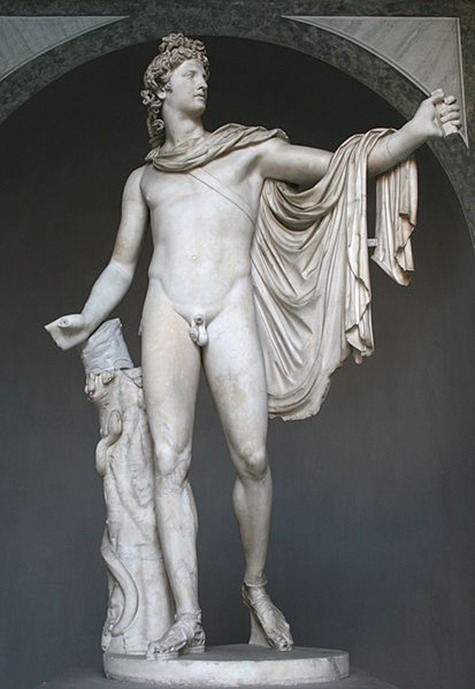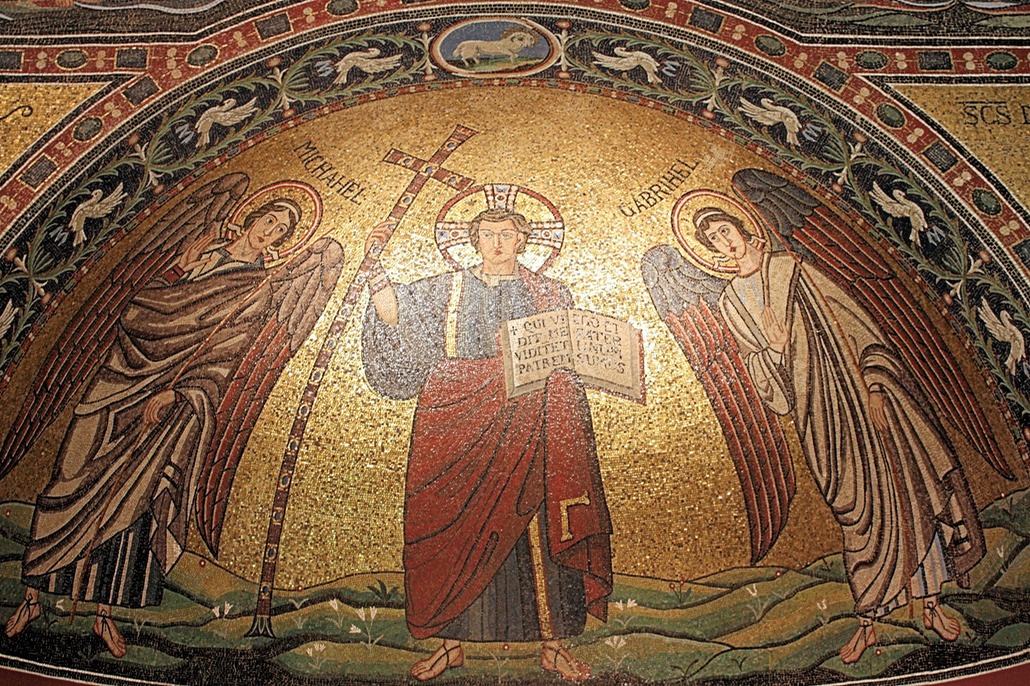THE CLASSICAL IDEAL
The Greek aesthetic, on the contrary, spiritualist and classical, seems more particularly to have favoured the art of sculpture. Based upon the hypothesis that somewhere in the depths of human consciousness there exists, for each object which comes into view, a perfect, ideally beautiful, type of that object, this aesthetic, which we still call "idealist," claims that it can achieve the emotion of beauty by reproducing natural objects - but embellished, idealised according to certain rules, albeit variable. It is trompe l’oeil applied to the poetic subject. It is the particular domain both of the old allegory and of the new sort of literary painting.
On that subject, re-read the old authors of the first half of the century, and also the most recent art criticism: Winckelmann, Charles Blanc, A. Germain, C. Mauclair (superiority of form over colour, of the nude to the clothed, of drapery over modern dress: the proportions of the ideal human body, that is to say, stripped of all the "stigmata of abasement," of individual character - types, archetypes, essential principles, norms, ideas), remember the neo-Greeks of 1840, the school of Ingres, the German school of Overbeck, the English school of the P. R. B., our own "painters of the soul."

The 'Apollo Belvedere' in the Vatican Museum. Second century Roman copy of a Greek original hailed by Johann Winckelman as the epitome of classical beauty and therefore of all human art.
But in the classical, Greco-Roman age, the ideal of man was man himself, and the goal of all human effort was to exalt the human body. We can see straightaway how idealism was bound to express itself through sculpture. That art of the palpable, which is not at all satisfied by appearances but only by reality, and which is capable, when required, of giving the most perfect illusion of living forms, that, clearly, is the art most suitable for giving a representation of the naked human body..
Doubtless, born as it was from architecture, sculpture for a long time - precisely until the classical age - preserved a care for geometrical proportions and for the expressiveness of measure, which are oriental and symbolist in origin. It was only gradually, and at the moment when the old mythic religions were replaced by a rational conception of the world, that the suppleness of idealistic naturalist imitation took over from the old inventiveness. Instead of the hieratic colossus, a life-sized statue after a living model; instead of the aesthetic canon, the human canon. The beauty of the edifice that incorporates a sculptural ornamentation is more and more separated out from the human beauty which becomes the main concern of the plastic motif. Ideal interpretation, the expression even, if you like, of the most elemental feelings. But the necessary end of idealism is naturalism. Symbolism, idealism, naturalism are the three states of The Aesthetic. A taste for exact representations propagated, as I recognise, by thousands of masterpieces, in the end brought about, with the Greco-Romans, that perversion of the sense of art of which the legend of Pygmalion and, on the other hand, the inane story of Zeuxis’ grapes (11) are but the all-too-real expression: the word 'idolatry', which the Christians applied to the cult of images, shows us the depths of the classical transgression.
(11) Zeuxis, Greek painter from the fifth century known for his realism. From the Wikipedia account: According to the Naturalis Historia of Pliny the Elder Zeuxis and his contemporary Parrhasius ... staged a contest to determine the greater artist. When Zeuxis unveiled his painting of grapes, they appeared so real that birds flew down to peck at them. But when Parrhasius, whose painting was concealed behind a curtain, asked Zeuxis to pull aside that curtain, the curtain itself turned out to be a painted illusion. Parrhasius won, and Zeuxis said, "I have deceived the birds, but Parrhasius has deceived Zeuxis."
THE 'BYZANTINE' IDEAL
Renouncing the all-enveloping light that caresses public places, the arcades [péristyles], the high profile of the works of pagan antiquity, Christian sculpture retired to the interior of the temple, sheltered by porches where light becomes mysterious, there to form timid bas-reliefs. It is thus that, obeying the symbolist reaction, they took up the role of the first sculptors - the decoration of monuments - and what marvels have they not drawn forth from the cathedral stones!
The age had arrived of an art more based on conventions, more favourable to the expression of mystery; painters, taken with a light other than that of the Sun, turned their attention to those interior lights that Religion revealed to them in the depths of their own being.
Byzantine painting is assuredly the most perfect type of Christian painting.
Much higher than the nature of which the Greeks had attempted such startling representations, beyond that naive admiration for trompe-l’oeil which is revealed in collections of sayings of famous men, (12) the Byzantine school invented, for the expression of Christian ideas, a whole plastic language, a precise, flowering eloquence like that of the Fathers.
(12) des recueils d'anas. The word 'ana' does exist in the Shorter Oxford Dictionary: 'A collection of the sayings or table talk of anyone.' It comes from the suffix -ana attached to the person's name. An example that comes to hand is a collection of the sayings of the eighteenth century playwright Henry Brooke - Brookiana.

Sixth century mosaic, originally made for the church of San Michele in Africisco in Ravenna, Italy, currently in the Bode Museum in Berlin.
Man withdraws into the background in such works, both as artist and as subject: it is not to him, to his specific beauty that the painter’s homage is addressed but to the Beauty of universal life. After that, what matters if the model is ugly? A Cimabue Virgin, Rembrandt’s Bathsheba, a Renoir bather would be equally intolerable were they endowed with life: in the painted work they do what is needed in the realisation of an expressive surface.
The field is also open to the landscape, which pantheism had ignored - to freely embrace all the spectacles that can touch the human heart.
And care for exactitude? Ah! The subject is so vast, so high, so unspeakable! Nothing exists any more save the surface covered with colours assembled, composed, harmonised, enhanced with rich materials, and it is that surface which is expressive: a microcosm born of man, and as rich in possibilities for moving us as the world itself
The rational, liturgical Byzantine art to which we owe the marvellous mosaics of Rome, of Milan, of Ravenna is likewise the creator, lest we forget, of the admirable formulas which Christian iconography used, competently or not as the case may be, to give form to the mysteries and to represent sacred history. It was the Byzantines who invented those definitive interpretations of the Gospel and of Dogma that Giotto borrowed from Cimabue, Raphael from Giotto, and all painters from Raphael to Ingres and beyond, and always. It is impossible for us to conceive a Christian subject without evoking something of their symmetrical, measured compositions, truly supernatural and of such mysterious simplicity. It is the fitness of their expression that has enabled them to cross the centuries, passing through so many troubles and disturbances. Byzantine art as such may be said to have finished with Cimabue, but its influence extends throughout the Middle Ages: and the symbolist idea which it promoted is still impressed on the whole of modern art.